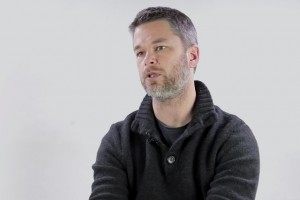Architecturing in a Cloud
Computer scientist Matthew Bass on dynamic environment, multitenancy, and coordination between releases
Can Cloud Computing be used for something else other than storing your files or sharing your pictures abroad? Of course. Here I’m going to show you some applications, some ideas, some of my research. But, of course, it’s just a little example of what can be done with Cloud Computing. The first example I’m going to show you is about meteorological forecasting. What brings us here is a collaboration I have with the Spanish Meteorological Agency, so, they were working on a provision of the 24 hour weather forecast for all the citizens of Spain. They were looking for an optimal and sustainable solution, so, instead of buying a supercomputer only for this task, we were proposing to use Cloud Computing, in particular that provided by Amazon. If you remember, Amazon is about a “pay us as you go” provision. You are only paying for what you use. Our solution allowed us to have this 24 hour forecast in only an hour and a half and only paying sixty dollars. Of course it was less than buying and maintaining a supercomputer for this. If our cloud solution was about using 128 processors. If you wanted to buy this, it is about two hundred thousand dollars in HP.
I’m going to give you another example of real life problems that can be solved using Cloud Computing. It is a collaboration that I am having with the National University of Cuyo which is a region of Argentina. This region of Argentina represents seventy percent of the national barnyard and frosts are their worst enemy. Here in Russia, of course, you are used to frost, but in Argentina they have a very big problem with them in agriculture. Think about that, in 2013 eighty percent of the production was lost. This drove to a very big economic problem not only for the region, but also for the country. They were keen on mitigating the effects of frost, when the frost is detected. They have different elements, they have different methods and they are very good. But the problem is when you want to predict the appearance of frost, and this is when computer science gets into action.

So, in this collaboration we provided a two-part solution. Firstly, what we had are low-cost weather stations that were handed to farmers. They were, like, small boxes with different sensors that were sending all the data in real time. They were meant to last for about two years, three years, depending on the battery. And what we were asking to farmers: “Okay, just put as many boxes as you can and spread them all around the fields”. But then, what do we do with all this quantitative data, this big data, that we were receiving? We needed to process it somewhere. What we were doing here was to execute several algorithms for this prediction of the appearance of frosts based on the data that was arriving from the different sensors. So, for a typical example of ten hectares we were providing a solution that would cost only two cents per hour. And this can be considered, of course, as a sustainable solution for a well-known problem.
Besides the different real life applications, the real life problems that can be solved with Cloud Computing. There is the main area that benefits from Cloud Computing. For me it is the most important, even more important than research which is teaching. As Assistant tenure-track Professor in a University what we conduct is a double life, like superheroes, we teach during the day and research during the night. Research and teaching benefit each other. As teachers, we have a big responsibility with the next generation. We will fill the ranks of science, and I am actively using Cloud Computing for this, in particular, when I am advising final year projects. So I can give you some examples of cool things that can be done in one academic year.
For instance, one of my students’ project was putting together images that were being streamed from different webcams in places such as airports, and train stations. This application he was developing was extracting all the faces from the webcam images and then crossing them with databases that could be from Interpol, FBI, or the Police from different countries. This way you could do real, instant monitoring of criminals in certain public places, considering the unfortunate events that we are facing nowadays. Of course, this needed high computing resources. So, he was using Cloud Computing to provide them.
Another example was a group of students, that wanted to provide a way for mobile application developers to store data on specific places, geo-located places, something like what we are doing now. I mean our society with PokemonGo. But they wanted to do it in a general way. This was years before PokemonGo, of course. So, let’s give you an example. You are the owner of different shops in Moscow and you want your clients to have an application on their mobile phone. When your clients approach a specific shop and you have a discount on a specific item, you want to make them alert of this. So, their application was providing all the basis for developers to store information. We were using this solution of these students for my hometown which is El Escorial, because last year we were doing a historical Gymkhana.

We were celebrating two hundred years of the proclamation of the liberation of our hometown from the hands of the French. And what we did was this historical Gymkhana where players were travelling from one side to another side of the town and they were looking for specific places. How did they know that they were in the right place? It was because the geo-location application of these students that was stored entirely on the cloud, guaranteeing high availability, was telling them: “The next clue is only loaded when the right place was visited”. Let me say that here we were also collaborating with Ubisoft, the Video Game developer, so we were using the Assassins Creed theme for our historical Gymkhana.
Another project that was done by a group of students of mine was an extension of a subject of the course I am teaching right now at the Complutense University in Madrid. Basically, I’m teaching computer network security. In other words, I am teaching my students to be hackers. And how do I teach my students to be hackers? Well, a lot of laboratory work is done. So, we were working with virtual machines. The idea of this project was to deploy different scenarios, different cyber world scenarios for each player and make some way for having a score for each player to see how they were able to break a given machine or bypass a specific firewall, and all of them were maintained by a computing cloud.
This way you can reuse all the elements and this way all of this cannot be traced, at least easily. Last but not least another project from my students was about deploying a personal Tor network, but of course the problem of the current Tor network is that you don’t know which elements are participating and some of them could be tapped. So here they were using cloud computing to deploy on the fly their own Tor networks which would be used only by them. This way cloud computing was contributing to their security and their privacy. So, I hope you enjoyed the different examples I have provided. They were more regarding industry, more regarding international corporations, and they were also about student projects that could be accomplished in one academic year. As you see, cloud computing is not only everywhere, but we can do very cool things with this technology.

Computer scientist Matthew Bass on dynamic environment, multitenancy, and coordination between releases

Physicist Markus Morgenstern on weak topological insulators, 2D materials, and spin pumping

Physicist Wolfgang Ketterle on quantum simulation, atomic Lego pieces, and evaporative cooling